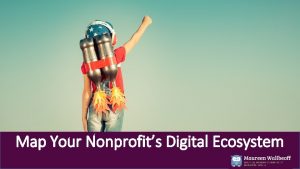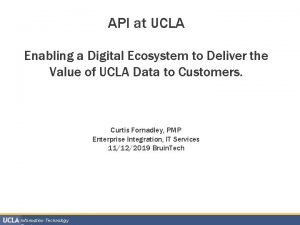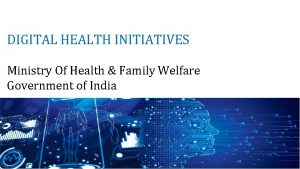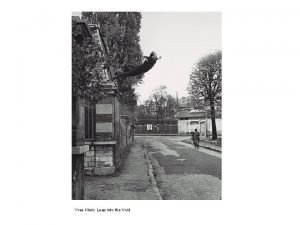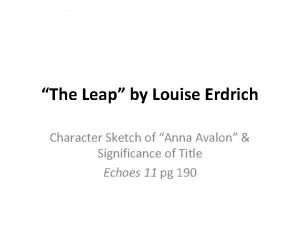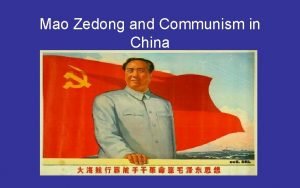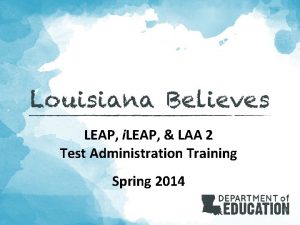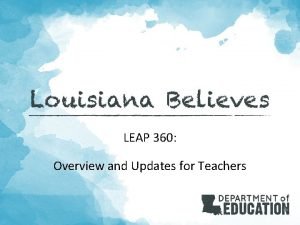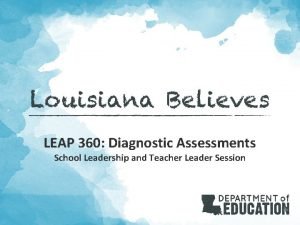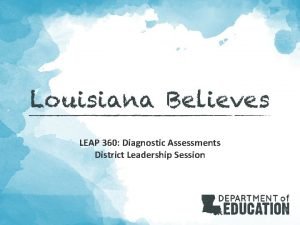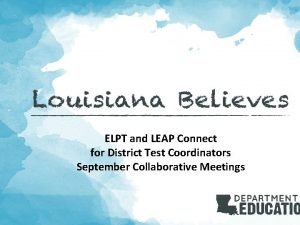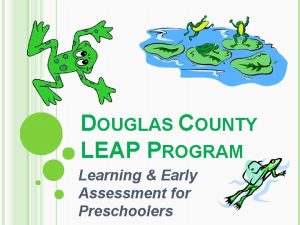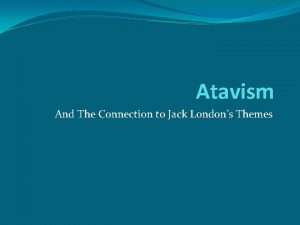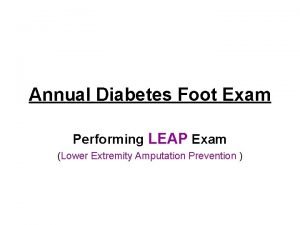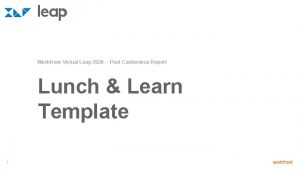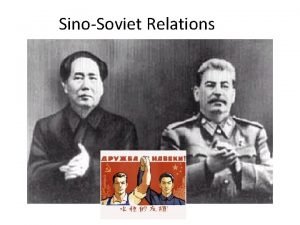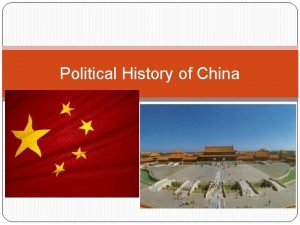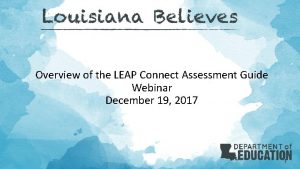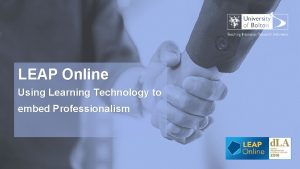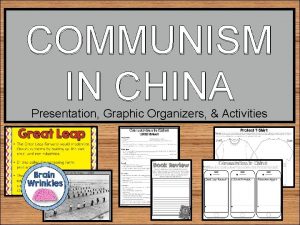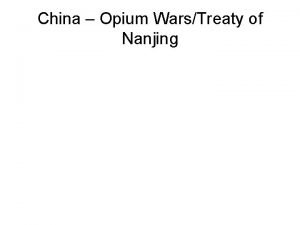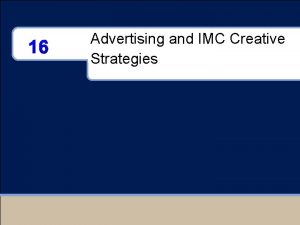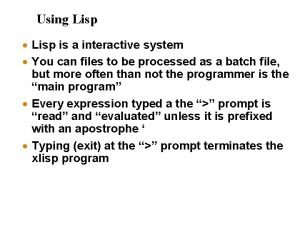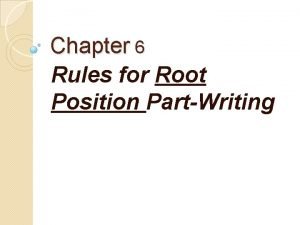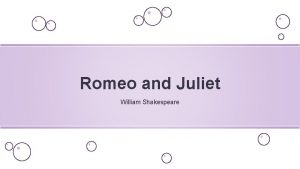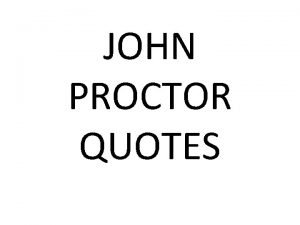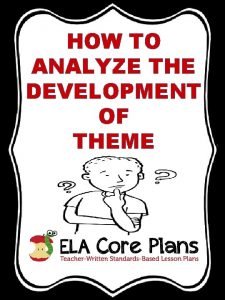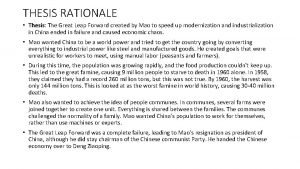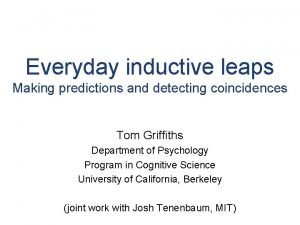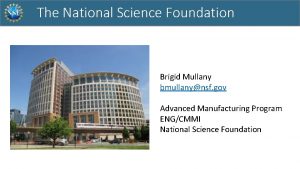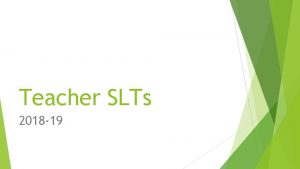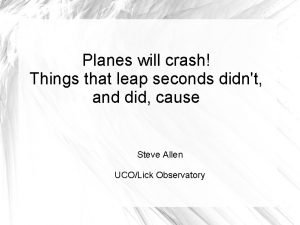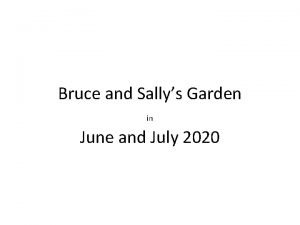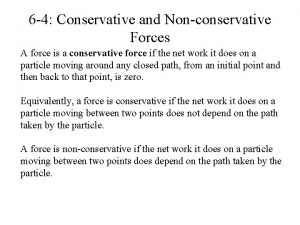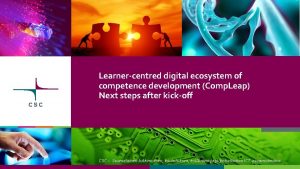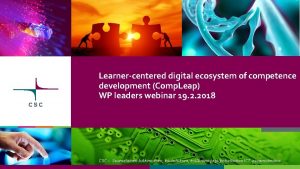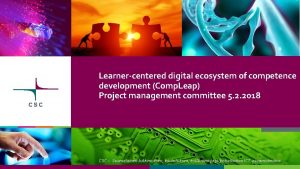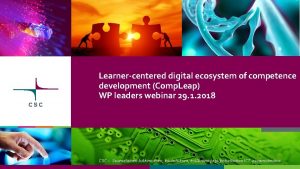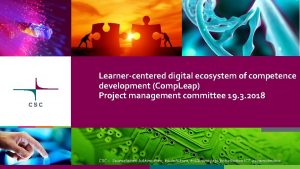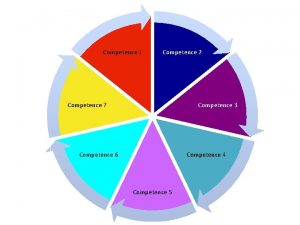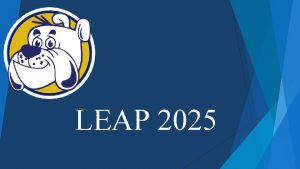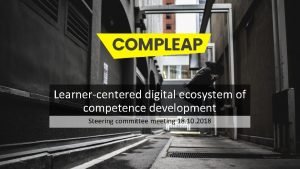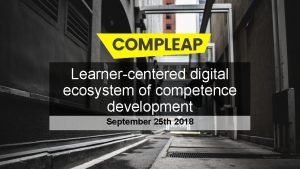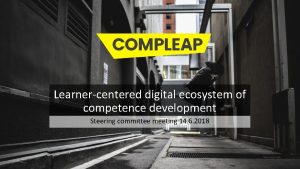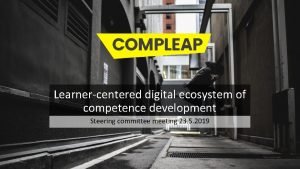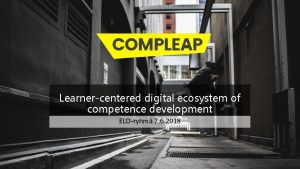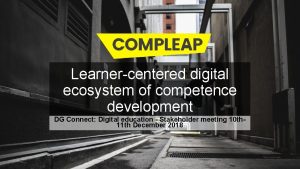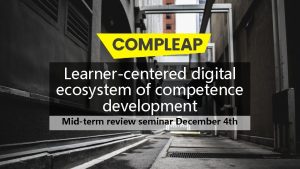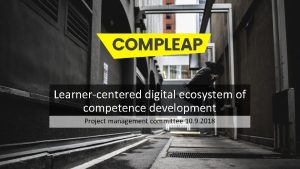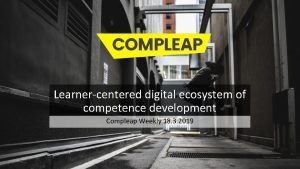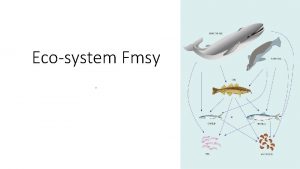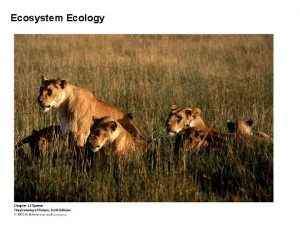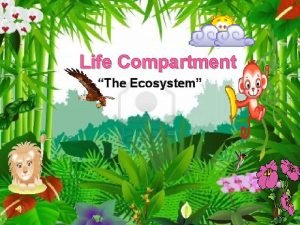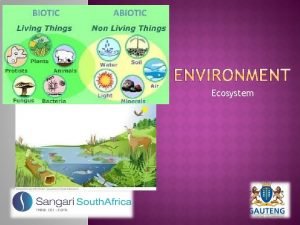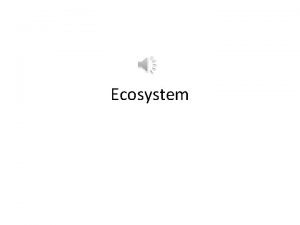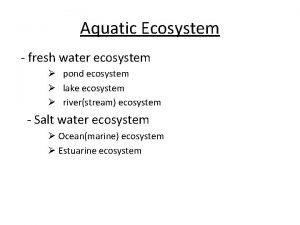Learnercentred digital ecosystem of competence development Comp Leap









































- Slides: 41

Learner-centred digital ecosystem of competence development (Comp. Leap) Project Kick-off CSC – Suomalainen tutkimuksen, koulutuksen, kulttuurin ja julkishallinnon ICT-osaamiskeskus

Why do we need Comp. Leap in Europe? • Skills and competence mismatch o Economic crisis 2009 o Unemployment – especially youth o ”over supply”, ”over-qualified” – academic unemployment o Migrants and refugees o NEET – neither in employment nor education • Lifelong-learning o Not only in classrooms – changing context o Formal qualifications – informal learning 2 30. 9. 2020

Kick-off agenda: Wednesday 10. 1. 2018 -10 Time 10: 00 10: 15 -12: 15 -13: 00 -14: 45 -15: 00 -17: 00 19: 00 -21: 003 Arrival to CSC office (Keilaranta 14, Life Science Center), meeting point: entrance hall 1 st floor, Coffee/tea in 7 th floor Welcome (CSC office, Sessio meeting room 7 th floor) Introduction to the project Presentation of project group members Project objectives (annex 1) Partner introductions (annex 2) Small groups: ways of working and expectations for the project (summary of outcomes) Lunch / Restaurant Life Science Center 1 st floor Tasks and timelines (annex 3) Shared working area – Eduuni Project road map Deliverables and milestones Schedule Responsibilities (annex 4) Project Contract Consortium Contract Project formalities Coffee/Tea Project management (annex 5) Key project management practices o Communication o Steering group o Reporting work o Change management Quality issues and project evaluation criteria Risks and success factors Q & A 30. 9. 2020 Dinner / Restaurant Shelter Kanavaranta 7, Helsinki Jonna Korhonen CSC, OPH, OY, Gradia, DUO Jonna Korhonen / CSC Tomi Kytölä / Ministry of Education and culture Antti Laitinen / CSC Each group presents the outcomes Antti Laitinen / CSC, WP leaders Anna Lindfors / CSC Antti Laitinen / CSC Heli Autere / CSC Antti Laitinen CSC DUO

Kick-off agenda: Thursday 11. 1. 2018 Time all day in CSC office, Sessio meeting room 7 th floor) 8: 30 -9. 00 Framework architecture (annex 6) Architecture tool (QPR) Some examples of first models Stakeholders (annex 7) Introduction to group work Working in small groups: listing stakeholders Stakeholder analysis Coffee/Tea Framework architecture (annex 6) User scenarios o NEET, immigrant, 17 -year old general upper-secondary school graduate, 50 -year old career changer Three prototypes and how we choose these? Stakeholders (annex 7) Stakeholder seminar(s) spring 2018 Workshop timetables and starting the prototype development Ari Rouvari / CSC Antti Laitinen / CSC Lunch / Restaurant Life Science Center 1 st floor 9. 00 -10. 00 10: 00 - 10: 15 - 11: 00 11. 00 -12. 00 12: 00 – 13: 00 – 14: 00 4 Next Steps (annex 8) Spring 2018 schedule Deliverables WP/TF leader webinars 30. 9. 2020 Steering group DUO CSC OPH DUO CSC Antti Laitinen

Introduction to the project: After this kick-off we´ll have: • Common understanding of the project objectives, tasks and expectations o Longer two-year perspective: The project as a whole o Shorter perspective: What is going to happen before summer 2018? • know each other and start working as a project team o Ways of working and what motivates us? Team culture and spirit • Started the work with stakeholders o There is a lot of them and their role is very important 5 30. 9. 2020

Project team • Erik van den Broek • Monique Leegte • Peter Heeling CSC – IT centre for Science OPH – Finnish National Agency for Education Project team of Oulu 30. 9. 2020 Jonna Korhonen Antti Laitinen Anna Lindfors Ari Rouvari DUO • Hanni Muukkonen-Van Der Meer University • Anni Silvola 6 • • Jyväskylä Educational Consortium Gradia • • Ulla Angervo Paula Borkowski Merja Väistö Katariina Repo Katariina Männikkö Marcus Casellius Seppo Ränninranta Riku Hanhinen • Jaana Virtanen

Introduction to the project: Objectives 1. Integrated and holistic learner-centred digital ecosystem framework (Architecture) What does this really mean? What kind of digital services do we/should we have in the context of lifelong learning that helps individuals to develop their competences? • Our job in this project is to draw the ”big picture” and develop digital services that helps individuals in competence development • How learning analytics might help individuals in their competence development? 7 30. 9. 2020

Our target in this project: Learner-centred digital ecosystem of competence development 8 30. 9. 2020

Life cycle with services (processes and services) as an example 9 30. 9. 2020

10 30. 9. 2020

Introduction to the project: Objectives 1. Integrated and holistic learner-centred digital ecosystem framework (Architecture) = Digital learner pathway o Personal competence development plan o Education offer o Labor market needs o Competence intelligence (Learning analytics) 2. Tailor the functionality of this framework » suitable across Europe 3. Build prototypes of this ecosystem (national implementation level) 4. Deploy developed ecosystem through networks o Associated partners 11 Very important theme is to build international network around these issues!30. 9. 2020

Associated partners • Finland: Salpaus Further Education – regional consortium • Finland: The Oulu Region Joint Authority for Education • Finland: Rovaniemi Municipal federation of Education • The Netherlands: The Dutch Alliance • Germany: Die EU-Geschäftsstelle der Bezirksregierung Köln • Portugal: Centro de Formação Profissional da Indústria Metalúrgica e Metalomecânica • Who else? 12 30. 9. 2020

Introduction to the project: Objectives Important to keep in mind: There is two different levels where we are working on: • International (EU) level – ecosystem framework • Implementation in co-operation with partners – three prototypes and piloting in Finland other EU-countries 13 30. 9. 2020

Technological solutions: • Open source • Modular and easily adaptable to different geographic locations • Possible to implement the ecosystem as a whole or only parts • My. Data: individual in control of their own educational data 14 30. 9. 2020

15 30. 9. 2020

Partner introductions (OPH, OY, Gradia, DUO) (1 -2 slides) • Basic background information of your organization • Expectations for this project • What else are you working on right now besides this project? 16 30. 9. 2020

DUO executive agency for the Ministery of Education. Culture and Science

Core business • Provide student finance and contributions in study costs • Fund educational institutions • Collect tuition fees and study debts • Organise state exams and naturalization exams • Perform logistical tasks for the central exams in secondary education, and other • Enrich educational data and make information products 18 • Authenticate and recognise diplomas; • Manage the Diploma Register • Chairman of the Dutch National Europass Center

Our goals for this project “International” becomes more and more important • build on expanding experience in international projects • enlarge international network We focus on digital tools around lifelong learning, like: • Europass • Open Badges • Blockchain Comp. Leap is related, fits well with the foreseen “New Europass” in Europe, and Open Badge projects in the Netherlands Learn! 19

Employees and offices • Number of fte: about 1, 790 • Offices in Groningen (main office) and The Hague • Six regional service offices • Seven regional exam locations 20

gradia. fi Jyväskylä Educational Consortium

gradia. fi Schools and Colleges § Gradia Jyväskylä §Jyväskylä College §Jyväskylä Institute of Adult Education §Jyväskylä Apprenticeship Training Centre §Gradia Jämsä §Jämsä College §Gradia Jyväskylä General Upper Secondary Schools § Jyväskylän Lyseo Upper Secondary School, Schildt Upper Secondary School, Jyväskylä Upper Secondary School for Adults

gradia. fi

gradia. fi About us ü Provider of general and vocational education aligned to the needs of trade, industry, and the public/private sectors ü Pioneer in developing new operational models for better performance in VET ü Recognized and awarded VET provider in Finland other countries

Introduction to the project: After this kick-off we´ll have: • Common understanding of the project objectives, tasks and expectations o Longer two-year perspective: The project as a whole o Shorter perspective: What is going to happen before summer 2018? • know each other and start working as a project team o Ways of working and what motivates us? Team culture and spirit • Started the work with stakeholders o There is a lot of them and their role is very important 25 30. 9. 2020

Working in a small, mixed groups Group 1 / Sessio Group 2 / meeting room 2 Group 3 / meeting room 3 Antti, Jonna Ari Ulla Paula Merja, Katariina M. Hanni Anni Katariina R. Jaana Riku, Marcus Seppo Erik Monique Peter 26 30. 9. 2020

Group work 1 • Know your team o Tell about yourself and your organization to the others o What other things are you working on right now? What is your role in Comp. Leap? • Project culture: Collect together key ideas and/or words on a paper o Ways of working o Communication o Expectations for this project • Prepare to briefly tell to the others about your discussions 27 30. 9. 2020

Tasks and timelines • Shared working area – Eduuni wiki and workspace (Antti, Anna) • Eduuni wiki - Comp. Leap • Eduuni workspace – editing documents online together • Project road map • Milestones • Schedule Responsibilities (annex 4) • Project Contract and Grant Agreement (Heli) • Consortium Contract • Project formalities 28 30. 9. 2020

Project management • Key project management practices • Steering group • Communication plan • Project Identity • Project website • Reporting work • Quality issues and project evaluation criteria • Impact evaluation study • Risks and success factors - Risk management plan • Change management • Q & A 29 30. 9. 2020

Project management methodology • Strong Agile culture • • • Interactive and flexible management Short-termed delivery (sprints) Dynamic team culture Less restrictive project control Real-time communication • Service design • Active participation of the end user in the development phase • Hybrid: traditional waterfall and agile principles 30 30. 9. 2020

31 30. 9. 2020

WORK PACKAGES WP 1 WP 2 WP 3 WP 4 WP 5 Total person months per participant CSC 18 9 3 36 OPH 4 20 40 12 3 79 OY 2 14 0 5 1, 5 22, 5 Gradia 1 3 2 6 3 15 DUO 1 2 0, 25 1, 75 5 10 26 48 45, 25 27, 75 15, 5 162, 5 Total person/months 32 30. 9. 2020

Project management • Key project management practices • PMC meetings • Steering group • meetings • Communication plan • Reporting work • Quality issues and project evaluation criteria • Impact evaluation study • Risks and success factors - Risk management plan • Change management 33 30. 9. 2020

34 30. 9. 2020

Framework architecture (Antti, Ari) • Architecture: what has been done, examples of architecture tool (QPR) and first models • How should we continue in this work? Each partners role? • User scenarios • Working in small groups: NEET, immigrant, 17 -year old general upper-secondary school graduate, 50 -year old career changer etc. • Three prototypes • We need models that helps us to find the possible three prototypes 35 30. 9. 2020

Group work 2 • Know your team o Tell about your self and your background to the others • Architecture design and user scenarios o List possible user scenarios: Who might be the learner in this ecosystem? o What would be three possible prototypes to be developed in this project and how do we decide this? • Prepare to briefly tell to the others about your discussions 36 30. 9. 2020

Working in a small, mixed groups Group 1 / Sessio Group 2 / meeting room 2 Group 3 / meeting room 3 Antti, Jonna Ari Ulla OPH representative OPH Hanni Tero? OY Jaana Hanna JAO Erik Monique Peter 37 30. 9. 2020

Stakeholders (Antti, DUO) • Working in small groups: different stakeholder areas • Stakeholder management plan • Workshop timetables 38 30. 9. 2020

Group work 3 • Know your team o Tell about your self and your background to the others • Stakeholders o List stakeholders for each possible user scenario o Stakeholder seminars in spring and forming the three prototypes and reference groups for each o Prototype development and workshop timetables o We should be ready to present these prototypes in stakeholder seminar in April – forming the reference groups and planning workshops and development plan together • Prepare to briefly tell to the others about your discussions 39 30. 9. 2020

Next steps (Antti) • Steering group • Spring schedule • Architecture design • WP/TF leader webinars • Stakeholder seminar arrangements • Finland • International • Other urgent deliverables • Stakeholder management plan • KPI = key progress indicators • Risk management plan 40 30. 9. 2020

41 30. 9. 2020
 Digital ecosystem map
Digital ecosystem map Digital ecosystem api
Digital ecosystem api Digital health ecosystem
Digital health ecosystem Leap into the void yves klein
Leap into the void yves klein The leap by louise erdrich
The leap by louise erdrich The great leap forward ap world history
The great leap forward ap world history Great leap forward propaganda
Great leap forward propaganda Leap.laa.edu.ph
Leap.laa.edu.ph Leap 360 geometry interim test form 1 answer key
Leap 360 geometry interim test form 1 answer key Leap 360
Leap 360 Leap 360 diagnostic
Leap 360 diagnostic Homo erectus ppt
Homo erectus ppt Leap connect standards
Leap connect standards Leap program douglasville ga
Leap program douglasville ga Old longings nomadic leap
Old longings nomadic leap Leap score diabetes
Leap score diabetes Workfront leap
Workfront leap Chinese great leap forward
Chinese great leap forward O bid me leap rather than marry paris
O bid me leap rather than marry paris Chinese great leap forward
Chinese great leap forward Leap connect practice test
Leap connect practice test Leap online bolton
Leap online bolton Great leap forward communes
Great leap forward communes Great leap forward communes
Great leap forward communes Creative leap meaning
Creative leap meaning List of leap years
List of leap years Tertian leap
Tertian leap Explain axial movement
Explain axial movement What does peter paragraph stand for
What does peter paragraph stand for The crucible john proctor quotes
The crucible john proctor quotes How is theme developed
How is theme developed Rationale thesis
Rationale thesis Inductive leap
Inductive leap Nsf leap hi
Nsf leap hi Slts grades
Slts grades Things that leap
Things that leap Sallys whitfield
Sallys whitfield Force conservative et non conservative
Force conservative et non conservative Warga digital merupakan yang
Warga digital merupakan yang E-commerce digital markets digital goods
E-commerce digital markets digital goods Digital data digital signals
Digital data digital signals Data encoding and transmission
Data encoding and transmission
